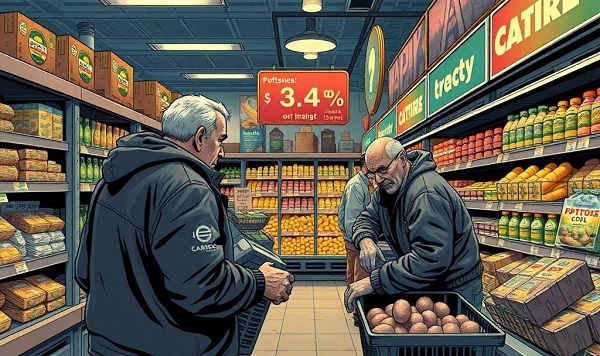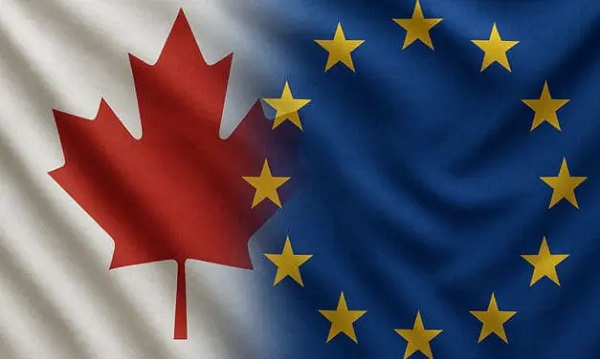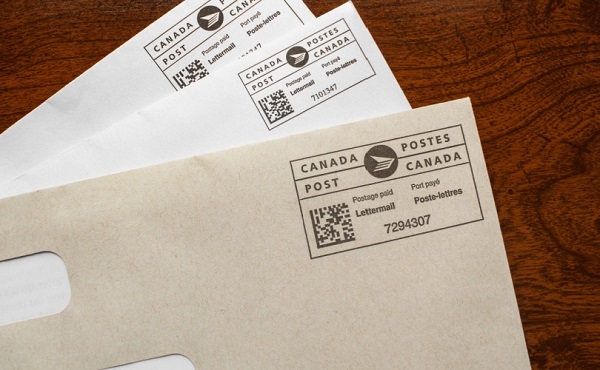Economy
When Potatoes Become a Luxury: Canada’s Grocery Gouging Can’t Continue

By Jeremy Nuttall
I don’t want to live in a country where pensioners have to put back potatoes, a food that supported millions of lives in desperate times
It was a routine wait in the grocery line last year when I personally witnessed the true cost of the grocery price spike. An elderly lady in front of me in the lineup did a double take when the clerk told her the total for her bill.
“What’s $10?” she asked, looking at the cashier’s screen. The clerk told her it was the handful of potatoes she’d grabbed. The woman, easily old enough to be retired, put the potatoes back.
Being middle-aged with a decent full-time job, until that moment, I was fortunate enough that experiencing the rising cost of groceries was not much more than a bit of a drag. But seeing a pensioner putting potatoes back highlighted the problem. The humble tuber has sustained whole civilizations in dire circumstances due to its being inexpensive and nourishing. Now it’s a luxury item?
After two years of complaints about the cost of groceries, the government pretending to fix the issue with the grocery code of conduct (and a lot of big talk), and more Canadians hitting food banks than at any time in recent memory, earlier this month we found out food prices will rise again next year.
The Food Price Report, produced by a joint effort between several Canadian universities, predicted a five per cent increase for meat and vegetables in 2025. That’s more than double the predicted rate of inflation from BMO for the coming 12 months.
Yet again, Canadian government actions have proven worthless.
The message is clear, and “we can’t really help you” is pretty much that message.
Another idea the government had to solve this was to head down to the U.S. to beg some of their chains to open up in Canada. This, rather than breaking up the big Canadian-owned grocery chains dominated by a couple of corporate giants already caught in a major price-fixing scandal, was their best idea.
Anything to get out of doing the work and angering the people with whom they hit the cocktail circuit.
I stopped buying my produce, and most of my meat, at large outlets a couple of years ago. I knew I was saving money, but just how much surprised me recently. I was at a Safeway and wanted to buy a russet potato there to save myself making another stop. I saw the price was $2.69 a pound. The spud I chose was more than a pound—potentially a $3 potato. Disgusted, I left the store without a thing to mash, bake, or julienne.
A few days later, I headed to my usual produce market, the Triple A market on Hastings in Burnaby, a trusty institution with a lot of character. I purchased a big russet potato, a big red onion, two Roma tomatoes, and two Ambrosia apples. (These are random items; please don’t try to make a pie out of this.)
My total was $5.15. This seemed reasonable to me. Right after, I went back to the same Safeway. I purchased the same items, while trying my best to get the weight as close as possible to the first batch I bought.
The result? Even with the Triple A red onion and potato having a couple hundred grams more weight, the Safeway total for the same basket was $8.83. That’s forty per cent more, probably closer to 50 per cent if you factor in the size difference for the onion and potato from Triple A.
A quick look around my nearest Jim Pattison-owned Buy-Low (or Buy Low Sell High, as we call it around my house) revealed prices similar to Safeway, yet the neighbourhood Sungiven, a Vancouver Asian market chain, had prices closer to those of the produce stand.
Now, the argument is often that big grocers have more overhead, advertising budgets, and larger staff. But I think it’s fair to say there’s something suspicious going on here. One thing is clear, though: big grocers are increasingly strictly for suckers.
Out here in B.C., this predicted five per cent increase in grocery prices will have companions by way of increases to property taxes recently passed in Metro Vancouver and a 17 per cent increase to natural gas rates in the province.
We may have a tariff war on the horizon, making all that even worse.
This crushing of Canadians can’t go on. Sadly, it will, due in part to the complete lack of real action from the authorities meant to protect the public interest.
To be clear, I’m not an expert on grocery stores or farming. I’m sure there are flaws in my complaints.
But one thing I know for certain is I don’t want to live in a country where pensioners have to put back potatoes—a food that has saved millions of lives during destitute times—at the checkout after seeing how much they cost.
And any government agency or elected official who thinks it can half-ass the response to something like that while collecting a paycheque is gouging Canadians in their own way.
The Bureau is a reader-supported publication. To receive new posts and support my work, consider becoming a free or paid subscriber.
Alberta
Alberta’s grand bargain with Canada includes a new pipeline to Prince Rupert

From Resource Now
Alberta renews call for West Coast oil pipeline amid shifting federal, geopolitical dynamics.
Just six months ago, talk of resurrecting some version of the Northern Gateway pipeline would have been unthinkable. But with the election of Donald Trump in the U.S. and Mark Carney in Canada, it’s now thinkable.
In fact, Alberta Premier Danielle Smith seems to be making Northern Gateway 2.0 a top priority and a condition for Alberta staying within the Canadian confederation and supporting Mark Carney’s vision of making Canada an Energy superpower. Thanks to Donald Trump threatening Canadian sovereignty and its economy, there has been a noticeable zeitgeist shift in Canada. There is growing support for the idea of leveraging Canada’s natural resources and diversifying export markets to make it less vulnerable to an unpredictable southern neighbour.
“I think the world has changed dramatically since Donald Trump got elected in November,” Smith said at a keynote address Wednesday at the Global Energy Show Canada in Calgary. “I think that’s changed the national conversation.” Smith said she has been encouraged by the tack Carney has taken since being elected Prime Minister, and hopes to see real action from Ottawa in the coming months to address what Smith said is serious encumbrances to Alberta’s oil sector, including Bill C-69, an oil and gas emissions cap and a West Coast tanker oil ban. “I’m going to give him some time to work with us and I’m going to be optimistic,” Smith said. Removing the West Coast moratorium on oil tankers would be the first step needed to building a new oil pipeline line from Alberta to Prince Rupert. “We cannot build a pipeline to the west coast if there is a tanker ban,” Smith said. The next step would be getting First Nations on board. “Indigenous peoples have been shut out of the energy economy for generations, and we are now putting them at the heart of it,” Smith said.
Alberta currently produces about 4.3 million barrels of oil per day. Had the Northern Gateway, Keystone XL and Energy East pipelines been built, Alberta could now be producing and exporting an additional 2.5 million barrels of oil per day. The original Northern Gateway Pipeline — killed outright by the Justin Trudeau government — would have terminated in Kitimat. Smith is now talking about a pipeline that would terminate in Prince Rupert. This may obviate some of the concerns that Kitimat posed with oil tankers negotiating Douglas Channel, and their potential impacts on the marine environment.
One of the biggest hurdles to a pipeline to Prince Rupert may be B.C. Premier David Eby. The B.C. NDP government has a history of opposing oil pipelines with tooth and nail. Asked in a fireside chat by Peter Mansbridge how she would get around the B.C. problem, Smith confidently said: “I’ll convince David Eby.”
“I’m sensitive to the issues that were raised before,” she added. One of those concerns was emissions. But the Alberta government and oil industry has struck a grand bargain with Ottawa: pipelines for emissions abatement through carbon capture and storage.
The industry and government propose multi-billion investments in CCUS. The Pathways Alliance project alone represents an investment of $10 to $20 billion. Smith noted that there is no economic value in pumping CO2 underground. It only becomes economically viable if the tradeoff is greater production and export capacity for Alberta oil. “If you couple it with a million-barrel-per-day pipeline, well that allows you $20 billion worth of revenue year after year,” she said. “All of a sudden a $20 billion cost to have to decarbonize, it looks a lot more attractive when you have a new source of revenue.” When asked about the Prince Rupert pipeline proposal, Eby has responded that there is currently no proponent, and that it is therefore a bridge to cross when there is actually a proposal. “I think what I’ve heard Premier Eby say is that there is no project and no proponent,” Smith said. “Well, that’s my job. There will be soon. “We’re working very hard on being able to get industry players to realize this time may be different.” “We’re working on getting a proponent and route.”
At a number of sessions during the conference, Mansbridge has repeatedly asked speakers about the Alberta secession movement, and whether it might scare off investment capital. Alberta has been using the threat of secession as a threat if Ottawa does not address some of the province’s long-standing grievances. Smith said she hopes Carney takes it seriously. “I hope the prime minister doesn’t want to test it,” Smith said during a scrum with reporters. “I take it seriously. I have never seen separatist sentiment be as high as it is now. “I’ve also seen it dissipate when Ottawa addresses the concerns Alberta has.” She added that, if Carney wants a true nation-building project to fast-track, she can’t think of a better one than a new West Coast pipeline. “I can’t imagine that there will be another project on the national list that will generate as much revenue, as much GDP, as many high paying jobs as a bitumen pipeline to the coast.”
Business
Carney’s European pivot could quietly reshape Canada’s sovereignty

This article supplied by Troy Media.
Canadians must consider how closer EU ties could erode national control and economic sovereignty
As Prime Minister Mark Carney attempts to deepen Canada’s relationship with the European Union and other supranational institutions, Canadians should be asking a hard question: how much of our national independence are we prepared to give away? If you want a glimpse of what happens when a country loses control over its currency, trade and democratic accountability, you need only look to Bulgaria.
On June 8, 2025, thousands of Bulgarians took to the streets in front of the country’s National Bank. Their message was clear: they want to keep the lev and stop the forced adoption of the euro, scheduled for Jan. 1, 2026.
Bulgaria, a southeastern European country and EU member since 2007, is preparing to join the eurozone—a bloc of 20 countries that share the euro as a common currency. The move would bind Bulgaria to the economic decisions of the European Central Bank, replacing its national currency with one managed from Brussels and Frankfurt.
The protest movement is a vivid example of the tensions that arise when national identity collides with centralized policy-making. It was organized by Vazrazdane, a nationalist, eurosceptic political party that has gained support by opposing what it sees as the erosion of Bulgarian sovereignty through European integration. Similar demonstrations took place in cities across the country.
At the heart of the unrest is a call for democratic accountability. Vazrazdane leader Konstantin Kostadinov appealed directly to EU leaders, arguing that Bulgarians should not be forced into the eurozone without a public vote. He noted that in Italy, referendums on the euro were allowed with support from less than one per cent of citizens, while in Bulgaria, more than 10 per cent calling for a referendum have been ignored.
Protesters warned that abandoning the lev without a public vote would amount to a betrayal of democracy. “If there is no lev, there is no Bulgaria,” some chanted. For them, the lev is not just a currency: it is a symbol of national independence.
Their fears are not unfounded. Across the eurozone, several countries have experienced higher prices and reduced purchasing power after adopting the euro. The loss of domestic control over monetary policy has led to economic decisions being dictated from afar. Inflation, declining living standards and external dependency are real concerns.
Canada is not Bulgaria. But it is not immune to the same dynamics. Through trade agreements, regulatory convergence and global commitments, Canada has already surrendered meaningful control over its economy and borders. Canadians rarely debate these trade-offs publicly, and almost never vote on them directly.
Carney, a former central banker with deep ties to global finance, has made clear his intention to align more closely with the European Union on economic and security matters. While partnership is not inherently wrong, it must come with strong democratic oversight. Canadians should not allow fundamental shifts in sovereignty to be handed off quietly to international bodies or technocratic elites.
What’s happening in Bulgaria is not just about the euro—it’s about a people demanding the right to chart their own course. Canadians should take note. Sovereignty is not lost in one dramatic act. It erodes incrementally: through treaties we don’t read, agreements we don’t question, and decisions made without our consent.
If democracy and national control still matter to Canadians, they would do well to pay attention.
Isidoros Karderinis was born in Athens, Greece. He is a journalist, foreign press correspondent, economist, novelist and poet. He is accredited by the Greek Ministry of Foreign Affairs as a foreign press correspondent and has built a distinguished career in journalism and literature.
Troy Media empowers Canadian community news outlets by providing independent, insightful analysis and commentary. Our mission is to support local media in helping Canadians stay informed and engaged by delivering reliable content that strengthens community connections and deepens understanding across the country.
-

 Crime2 days ago
Crime2 days agoHow Chinese State-Linked Networks Replaced the Medellín Model with Global Logistics and Political Protection
-

 Addictions2 days ago
Addictions2 days agoNew RCMP program steering opioid addicted towards treatment and recovery
-

 Aristotle Foundation2 days ago
Aristotle Foundation2 days agoWe need an immigration policy that will serve all Canadians
-

 Business2 days ago
Business2 days agoNatural gas pipeline ownership spreads across 36 First Nations in B.C.
-

 Business16 hours ago
Business16 hours agoEU investigates major pornographic site over failure to protect children
-

 Courageous Discourse1 day ago
Courageous Discourse1 day agoHealthcare Blockbuster – RFK Jr removes all 17 members of CDC Vaccine Advisory Panel!
-

 Health1 day ago
Health1 day agoRFK Jr. purges CDC vaccine panel, citing decades of ‘skewed science’
-

 Censorship Industrial Complex1 day ago
Censorship Industrial Complex1 day agoConservatives slam Liberal bill to allow police to search through Canadians’ mail



